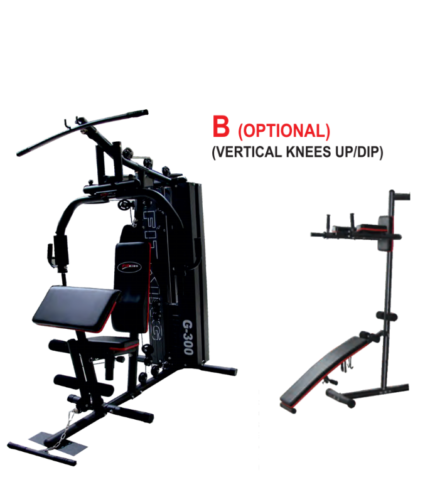Choosing the right location for your gym is one of the most critical decisions you will make as a fitness entrepreneur. The success of your gym hinges on various factors, including visibility, accessibility, and alignment with your target demographic. In this blog, we will explore key considerations that will help you select the perfect spot for your gym, while also highlighting recent trends and opportunities in the fitness industry.
The Importance of Location
The location of your gym is not merely a physical address; it’s a strategic decision that can significantly impact your business’s bottom line. A well-chosen location can attract new members, retain existing ones, and create a vibrant community around your gym. Conversely, a poorly selected site can lead to challenges that may jeopardize your venture.
Key Considerations When Choosing a Gym Location
- Demographics: Understanding your target audience is paramount. Analyze the age, income level, lifestyle, and fitness preferences of the local population. For instance, if you plan to cater to college students, a location near universities or colleges would be ideal. Conversely, if your target market includes affluent professionals, consider areas with higher disposable incomes and amenities like ample parking and luxury facilities.
- Visibility: A gym located in a high-traffic area with good visibility is more likely to attract walk-in customers. Look for locations near popular retail spots, coffee shops, or busy intersections where potential members can easily see your gym. Clear signage is also essential for brand recognition and attracting passersby.
- Accessibility: Ensure that your gym is easily accessible by various modes of transportation. Consider proximity to public transport hubs and major roads. If most of your clients will be driving, ample parking space is crucial; if they are likely to walk or bike, ensure safe and convenient pathways to your facility.
- Competition: Conduct thorough market research to understand the competitive landscape in your chosen area. Identify existing gyms and fitness studios nearby and analyze their offerings, pricing structures, and client demographics. This information will help you identify gaps in the market that your gym can fill and differentiate your services from competitors.
- Zoning Regulations: Before finalizing a location, familiarize yourself with local zoning laws and regulations regarding commercial properties. Ensure that the space is approved for use as a fitness facility and check for any necessary permits or licenses required to operate.
- Neighborhood Dynamics: The surrounding businesses can significantly influence foot traffic to your gym. Being located near complementary businesses such as health food stores, cafes, or wellness centers can create synergy and attract more customers to your facility.
- Future Development: Consider the potential for growth in the area where you plan to establish your gym. Look into any upcoming developments or infrastructure projects that could increase traffic or enhance the local community’s appeal over time.
Recent Trends Affecting Gym Location Choices
As the fitness industry evolves, several trends are shaping how entrepreneurs choose their gym locations:
- Hybrid Fitness Models: With the rise of online workouts and digital fitness solutions, many gyms are adopting hybrid models that combine in-person training with virtual classes. This shift means that gyms located in residential areas may have an advantage as they cater to individuals who prefer convenience in their fitness routines.
- Health-Conscious Communities: There’s an increasing demand for health-focused lifestyles among consumers. Gyms located near health-conscious communities—such as organic markets or wellness centers—are more likely to attract members who prioritize fitness as part of their overall well-being.
- Sustainability Practices: As consumers become more environmentally conscious, gyms that incorporate sustainable practices into their operations may find favor with potential members. Locations near eco-friendly businesses or within green community developments can enhance your brand’s appeal.
Practical Steps for Finding Your Ideal Gym Location
- Conduct Market Research: Utilize surveys or focus groups to gather information about potential clients’ preferences regarding location and amenities.
- Evaluate Multiple Locations: Don’t settle on the first promising site you find; visit several locations at different times of day to assess traffic patterns and visibility.
- Engage with Real Estate Professionals: Collaborate with real estate agents who specialize in commercial properties to gain insights into available spaces that meet your criteria.
- Assess Building Features: Consider factors such as ceiling height, natural light availability, plumbing access for showers and locker rooms, and overall layout flexibility when evaluating potential buildings.
- Plan for Growth: Choose a location that allows for future expansion if needed—whether through additional space or increased membership capacity.
Conclusion
Selecting the right location for your gym is a multifaceted decision that requires careful consideration of various factors including demographics, visibility, accessibility, competition, zoning regulations, neighborhood dynamics, and emerging trends in the fitness industry. By understanding these elements and conducting thorough research, you can position your gym for success in a competitive market.
Embrace current trends such as hybrid fitness models and sustainability practices while ensuring that your chosen location aligns with the needs of your target audience. With strategic planning and informed decision-making, you can create a thriving gym environment that attracts new members and fosters a strong community around health and wellness.
In summary, take the time to evaluate all aspects of potential locations thoroughly—this investment in due diligence will pay off by setting up your gym for long-term success in today’s dynamic fitness landscape.












